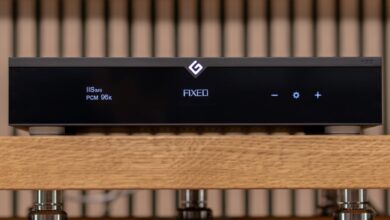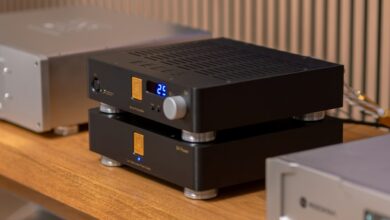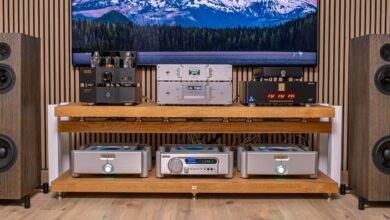Ansuz PowerSwitch D3 – The Apex of Audiophile Switches?

You don’t know what you don’t know.
There are known knowns. There are things we know we know. We also know there are known unknowns. That is to say, we know there are some things we do not know. But there are also unknown unknowns, the ones we don’t know we don’t know.
(US Defense Secretary Donald Rumsfeld, February 2002)
I heard this “expression” a few years back and did not find it catchy or self-explanatory. But somehow, deep inside me, a revealing truth started to emerge. As annoying as it was, the childish simplicity and repeated words had no rhythm of a good saying; it stuck with me and later started to come back unpredictably whenever I found myself as the owner of the immutable, incontestable, and pretty apparent absolute truth. I learned the original context of risk assessment at that time and that this was, in fact, a modified application of the Johari Window model (developed by Joseph Luft and Harry Ingham in 1955 as a psychological model for interpersonal communication). For me, it was just a reminder of this “blind spot” that existed all the time and had the potential of rendering any absolute truth based on assumptions into oblivion. That does not mean we should not have anchors and solid opinions in reality. Still, we should always keep an eye on the idea that all these fundamental truths are only temporary until more details of the grand scheme emerge, and that always tends to happen when they are less expected. Also, it is a permanent reminder of the “other side truth” of equilibrium and moderation. In fact, the Johari window model is used to enhance the individual’s perception of others. So, we should listen and always be aware of the “blind spot” whenever we make an assessment and feel confident of our definitive truth. It is not an easy exercise, and I cannot say I have mastered it; I am so far from any routine in practicing the awareness required.
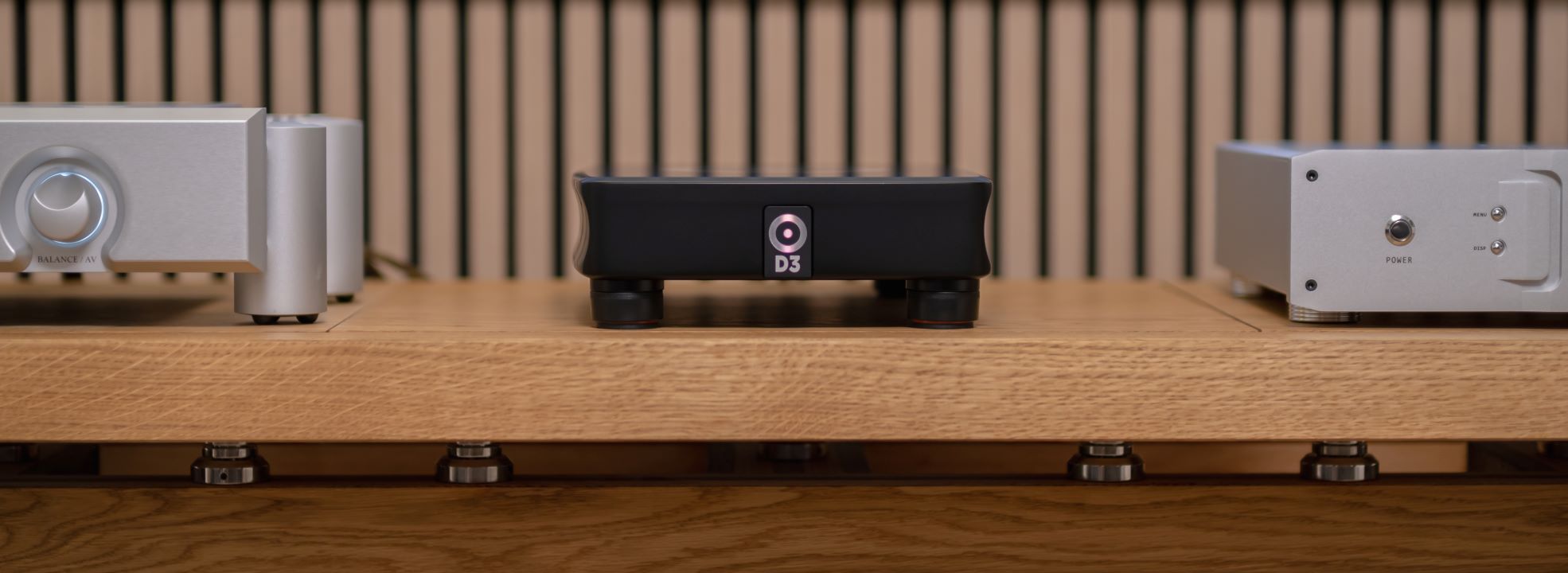
Today, I will try it again. It is easy to declare absolute truths like “Best of the Best…” or “Definitely a must buy…”. Sharing strong opinions like those does not help, even if they are based on genuine emotions and the reviewer’s real excitement, especially in the opinionated circumstances of today’s streaming equipment. Before jumping to more or less educated conclusions, let’s follow the assessment model, a crucial guide in our product review.
The Subject
The third generation of Audio Group Denmark audiophile network equipment consists of Ansuz PowerSwitch D3 and Ansuz Digitalz D2 ethernet cables. As we will see, this is not your typical network switch, and the wires are not the usual CAT6 ethernet cords.
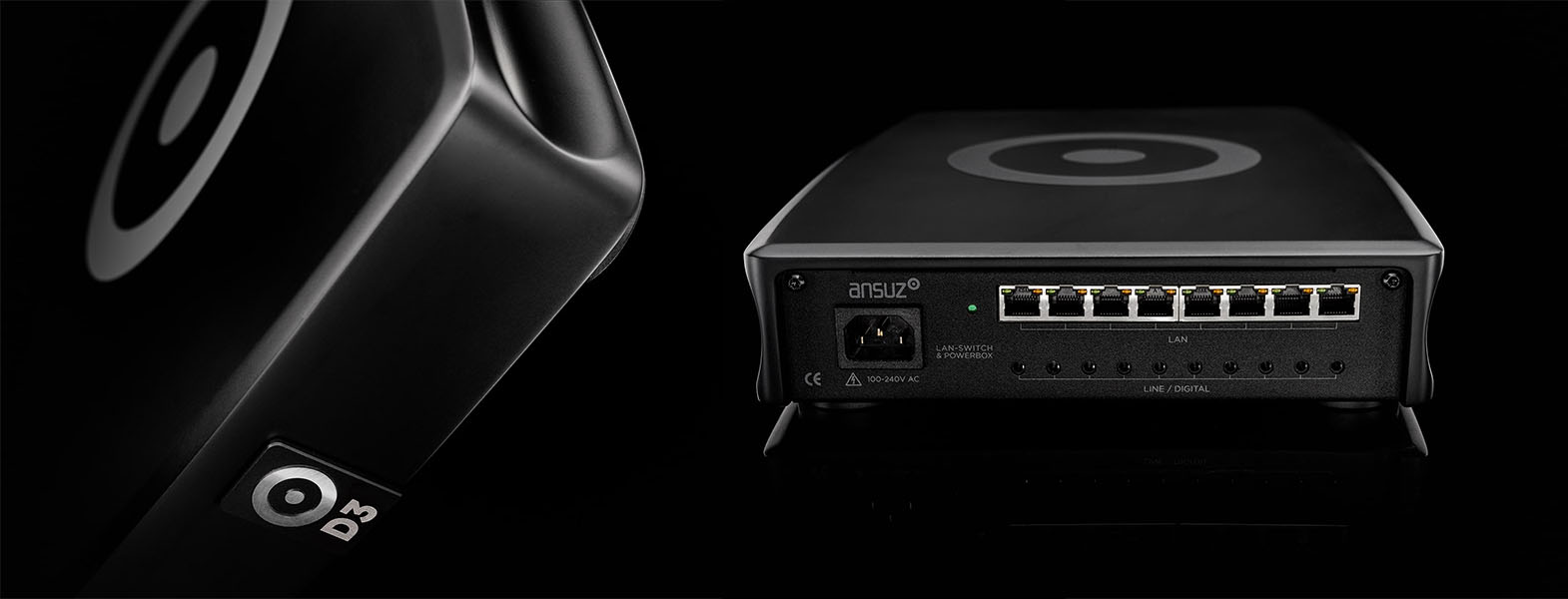
Known Knowns
We are aware of this, and the impact is well-established. We learned about the effects of noise suppression everywhere in the audio chain. We also learned about the benefits of a clean signal, in general, digital or analog, as any noise will be amplified later and be more complex and challenging to separate and adequately eliminate from the signal path. That is why there is almost an undisputed benefit of using audiophile network equipment in a revealing system today.
We have already tested the well-regarded Melco S100/2 and LHY Audio SW-10 ethernet switches, which are labeled with true audiophile qualities (I recommend checking the reviews for each one if you haven’t already). So, we already know how ethernet transmission relies on analog radio frequency and why bit-perfect doesn’t always mean it will sound good. Clean power and separated network setup also significantly impacted the overall performance. Strangely enough, cascading switches seemed to be a real thing in the end.
These discoveries become fundamental truths about the performance of a well-put-together and highly revealing audio setup. Can previous experiences be enough and stand for assumptions when assessing new equipment? For this, we have to change the angle and follow further the methodology.
Known Unknowns
We know these factors, but their impact or likelihood isn’t established. The first thing that comes to my mind is the impact of a different technology, a new perspective, and a new approach to solving the same problem. How will this perform in the end? Is it a real game-changer?
The third generation of AGD’s network equipment goes much further on the bold path cut by predecessors. Let’s not forget the “PowerSwitch” naming, which reveals more about the technology. We will have to dive deep into the powered aspect of the switch and the cables. Instead of using optical galvanic separation, Ansuz relies on its proprietary noise suppression technology. It is an active one based on multiple active and passive Tesla coils. New materials are entering the game; the active Zirconium Tesla coils could have an unknown impact.
There are a lot of known unknowns at this point, and it might not be an easy apple-to-apple comparison. As we will see further, a totally different scenario will be required to understand the actual performance.
Unknown Knowns
There are factors that we aren’t aware of and never considered. This is our “blind spot.” All these aspects may be revealed and change the whole playground. We might not be aware of them for the entire process, but we want to keep our eyes open for that possibility. This is where you might help, our esteemed reader! Please do not be shy and share any information that can reveal our blind spot. This is the only way to consolidate a truly educated conclusion based on facts and objective but also subjective opinions.
Anyone can sometimes jump on the “novita” bandwagon. Sometimes, better is the enemy of good. Sometimes, a side step could be easily mistaken for an improvement. And sometimes, we need to take a step back to understand correctly. We have to remember possibly what we have forgotten.
Unknown Unknowns
No one can consider this. This is where the unpredictable future will show us differently. And it happened before. That is why all we can do to prepare is to let go of definitive conclusions, clearly state our assumptions, and be ready to adapt to any new situation.
An open mind is crucial here; you do not know what you do not know!
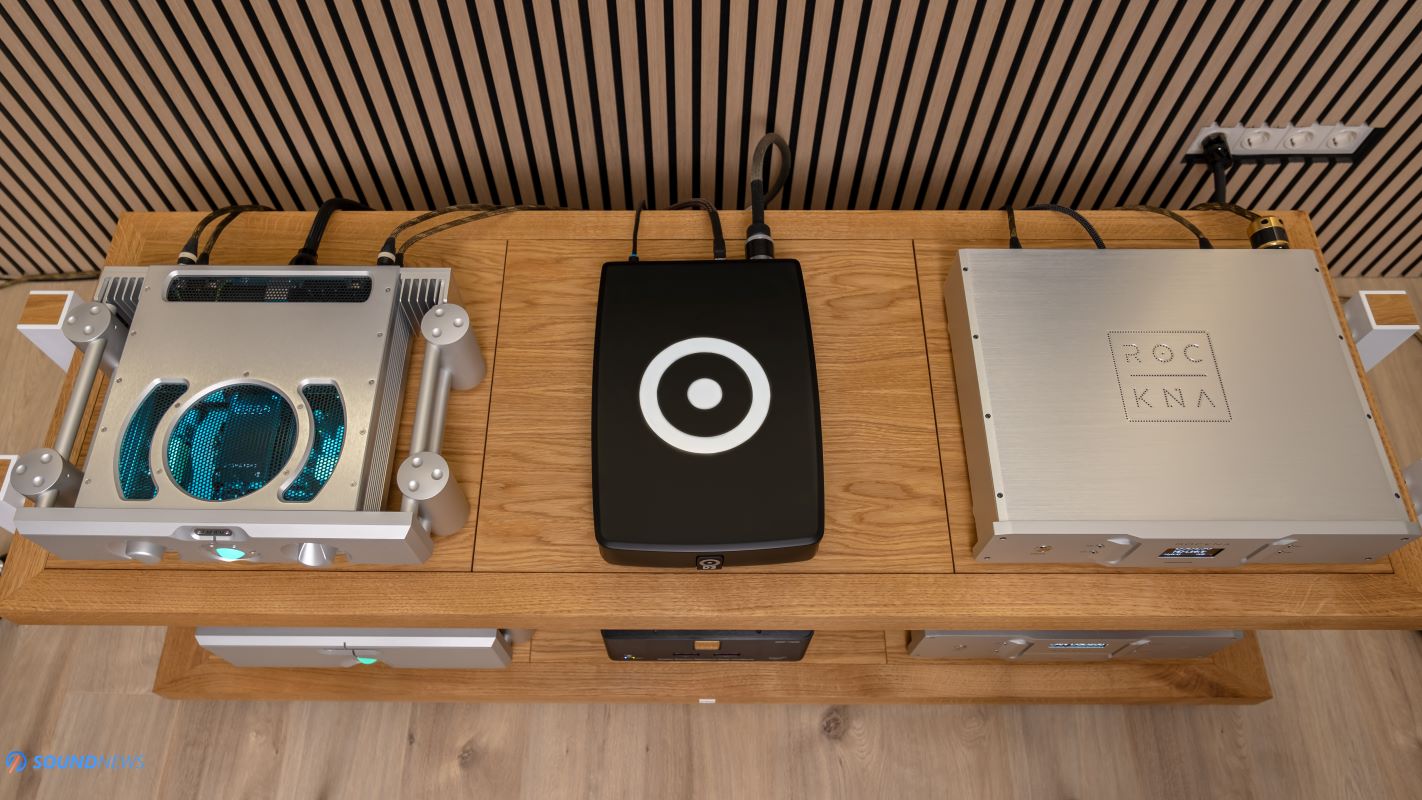
Ansuz PowerSwitch D3
Audio Group Denmark
At the end of last year, we were privileged to have a factory tour of Audio Group Denmark. Ansuz is just one of the brands under the AGD umbrella, and it gathers some of the Danes’ most important technologies applied in cables, power and ethernet distribution, noise reduction, and resonance control. The Aavik label will deal with AGD’s electronics: power amplifiers, streamers, DACs, and, yes, phono stages. Børresen Acoustics is now one of the world’s most respected brands of loudspeakers, and it shares the same technological marvels with all other group siblings. Axxess is the new family member and, as it happens in life, the boldest and most exciting one. Axxess promises to bring all these spectacular wonders to the masses by trickling down the high-end tech of the statement products to a more affordable package while retaining as much of the sound characteristics and product quality as possible.
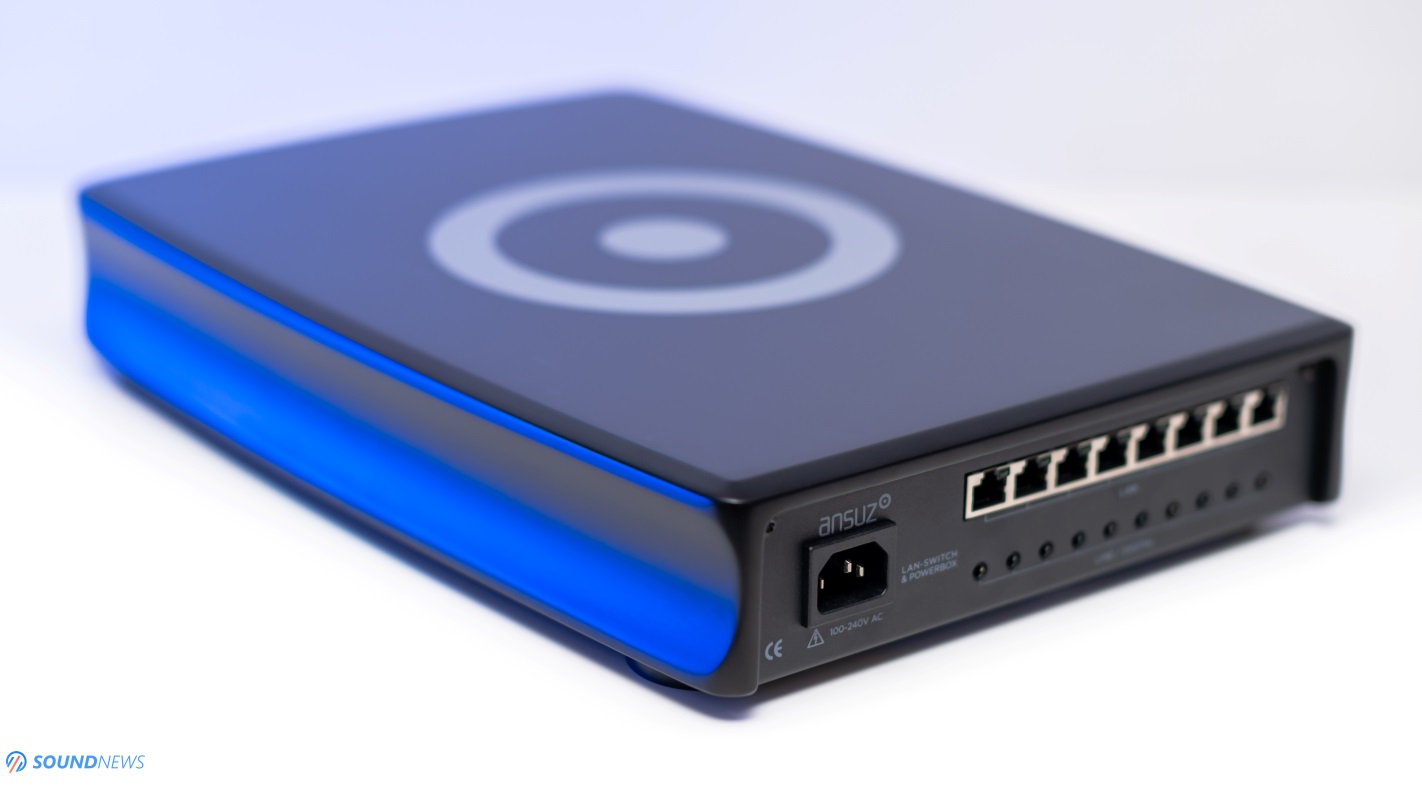
This year at Munich High-End, we faced the Danes’ audacity. We had to award Audio Group Denmark our Best of Show, the highest title. Six months after we visited Denmark, the Vikings showed at least eight brand-new speakers. We were overwhelmed, indeed.
PowerSwitch Technology
The Power attribute means two things: these switches from Ansuz are equipped with active multiple noise-suppressing techniques and have built-in Ansuz PowerBox for powering other related active noise-suppressing links from the audio chain. This groundbreaking audio technology for noise reduction and resonance control ensures that virtually no noise is transmitted from the PowerSwitch to the audio components.
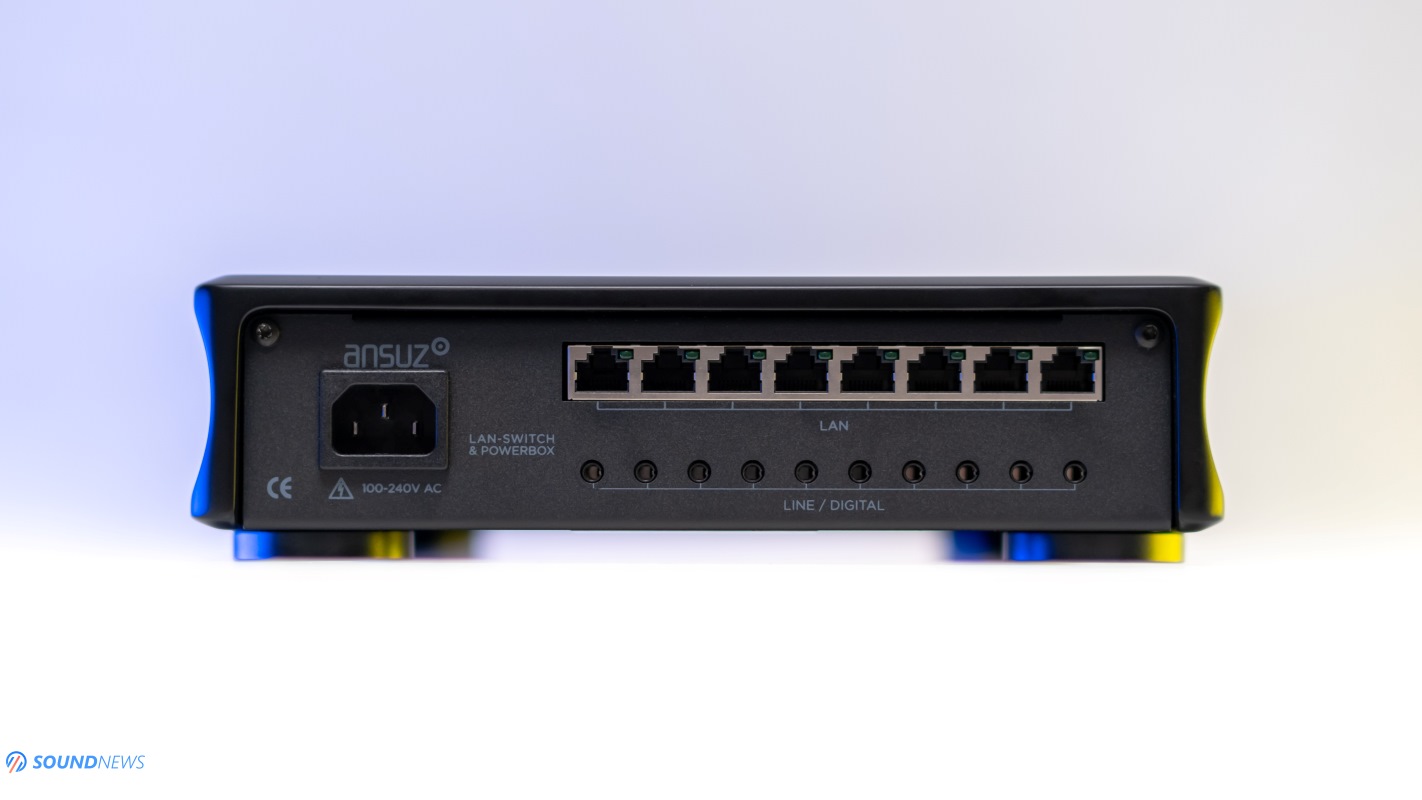

The Tesla Coil Principle
The fundamental operating principle of the Ansuz Tesla coil is to have two coils wound in opposite directions – one coil and one counter coil. In Ansuz’s words, this is called “A double inverted coil.” The two coils carry voltage, and when one of the Tesla coils encounters a voltage spike, a counter spike is activated to eliminate the noise. Since noise spikes are pure voltage carrying virtually no charge, the cancelation is quite good but not perfect. Adding more Tesla coils in parallel increases the noise cancellation, and the perceived blackness in the music increases significantly along with the purity and clarity of the sound. Ansuz uses various types of Tesla coils, as their individual properties ideally complement and reinforce each other.
Active Tesla Coils
The most effective incarnation of Tesla coils is the Active variant, which, when implemented around cables and as Square coils on opposing sides of the printed circuit board, actively protects the signal from absorbing airborne RF noise. The active version is three to four times more efficient than the Passive cable Tesla coil.
The PowerSwitch D3, reviewed here, contains the latest Active Zirconium Tesla coil technology. Ansuz has implemented a zirconium bar in its anti-aerial resonance coil design for this. Based on Ansuz’s general curiosity about the properties of different materials, they have implemented a zirconium bar in their anti-aerial resonance coil design. This is another impressive upgrade to the Ansuz anti-aerial resonance coil technology. As Ansuz says: “The properties of this zirconium bar allow for unprecedented resonance control, resulting in outstanding musical refinement. This creates a natural soundstage unrivaled in purity, precision, and attention to musical detail.”
Active Square Tesla Coil
The active square Tesla coils are embedded in our printed circuit boards—a coil on the top and a counter coil on the back. The principle is precisely the same as that of the active Tesla coil, which thus has a greater ability to eliminate noise than the passive Tesla coils.

Analog dither technology 3rd generation
A third generation of Ansuz analog dither technology has been developed. Analog dither technology originated in radar technology, ensuring a stronger signal and, thus, greater range. The active Tesla coils send pulsating signals at precisely defined frequencies in anti-phase. This significantly amplifies the musical signal and eliminates the background noise floor. Analysis and studies have led to new options, and a lot of listening has resulted in this third-generation design, which further optimizes the most effective frequencies. When reproducing the recordings, this design should further open the soundscape with the tiniest details.
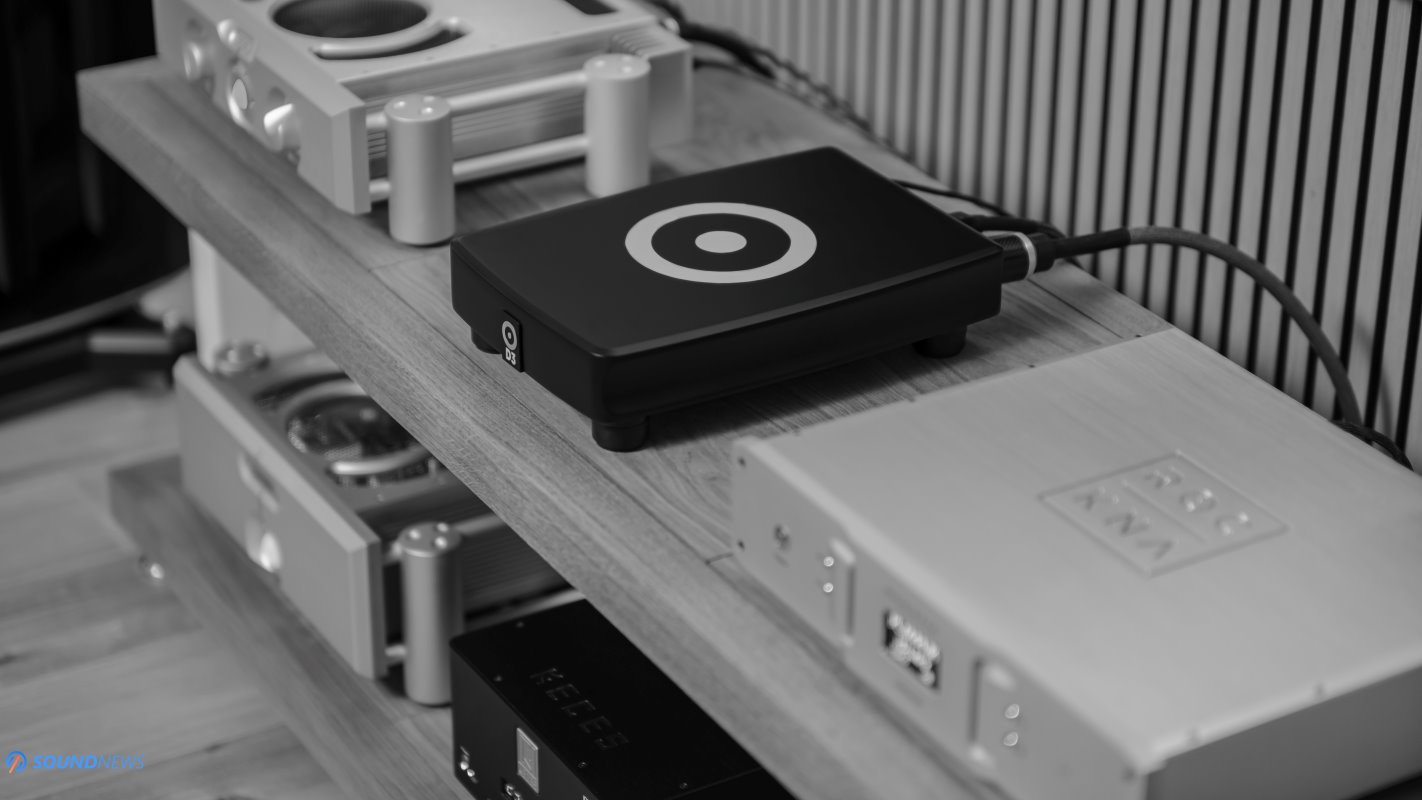
Natural-based composite cabinet material
The cabinet design is a crucial Ansuz characteristic designed to eliminate sonic distortion. The disturbing sonic influence emanating from the material the cabinet is made of – mostly aluminum – results from its mechanical resonance. To eradicate this sonic distortion, the challenge was to minimize the use of aluminum in the cabinet. Ansuz’s sister company, Aavik, began testing various materials and designed an innovative natural-based composite material, which reduces the mechanical influence, particularly the hysteresis. The sonic result is distinctly audible and reflects a further prominent cornerstone in Ansuz’s quest for the ultimate music experience.
PowerBox Functionality
All Ansuz PowerSwitches have built-in PowerBox functionality to connect Ansuz D2 series cables and higher. The inline cable box that is part of the Ansuz D2 series cables and higher contains Active Tesla Coils, which work under voltage and are up to 4 times as effective as the Passive Tesla Coils and provide a lower noise floor and less ground potential between equipment. However, these Active Tesla Coils must first be energized, requiring a PowerBox, which can be acquired separately. However, this functionality is built into PowerSwitches. To use this, connect the supplied 3.5mm jack-to-jack cable between the PowerSwitch and the inline-block of the cable.
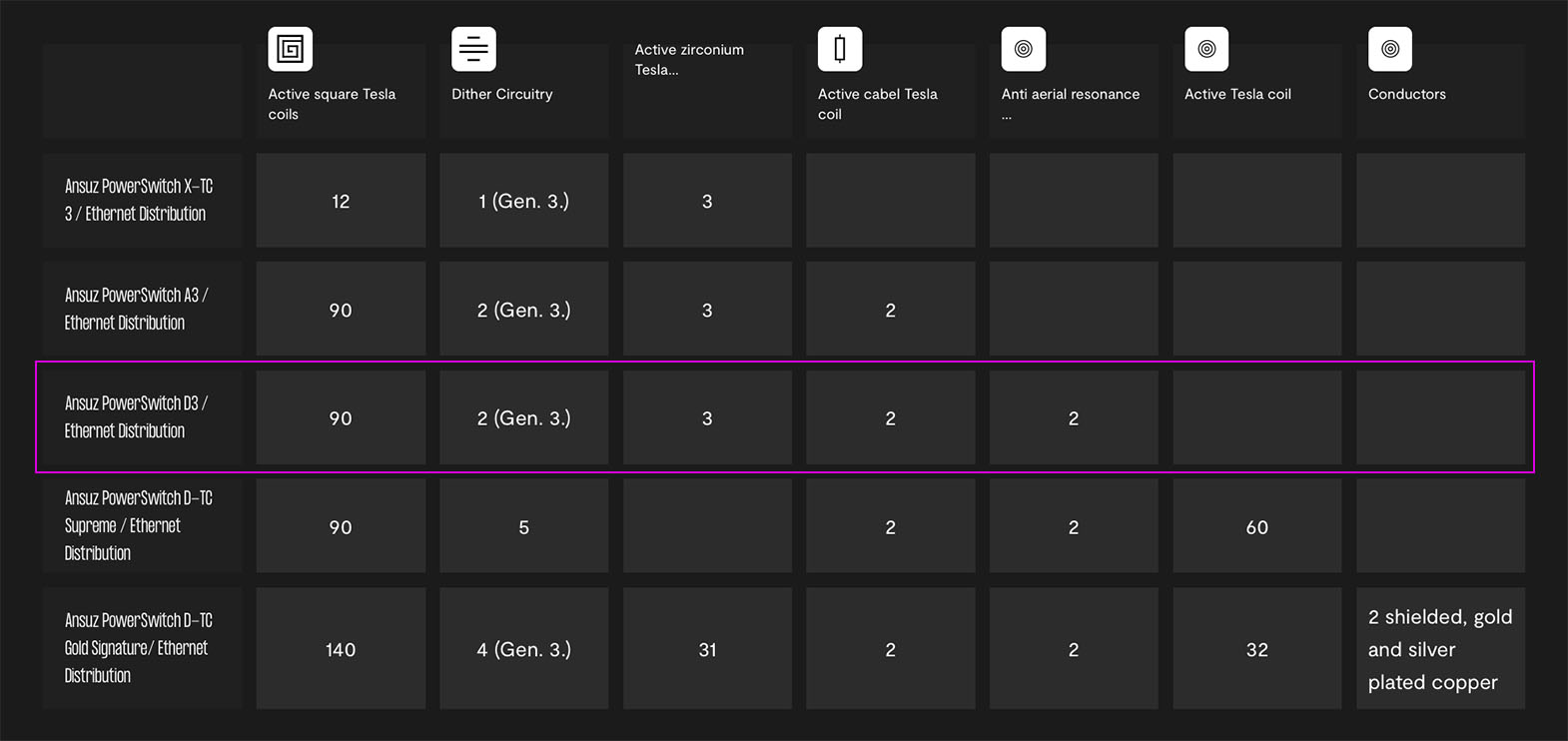
PowerSwitche Range
The Ansuz PowerSwitch D3 has no fewer than 90 Active Square Tesla Coils, 3 Active Zirconium Tesla Coils, 2 Active Cable Tesla Coils, and 2 Analog Dither Circuitry Gen.3. As an extra compared to the Ansuz PowerSwitch A3, the PowerSwitch D3 is also equipped with Ansuz’s very effective ‘Anti Aerial Resonance Coil’ technology. Thanks to this, the PowerSwitch D3 has much more extensive noise suppression than the PowerSwitch A3 and X-TC3.
PowerSwitches have 8 x LAN Port connections and 10 x PowerBox Outputs for compatible Ansuz cables (D2 and higher).
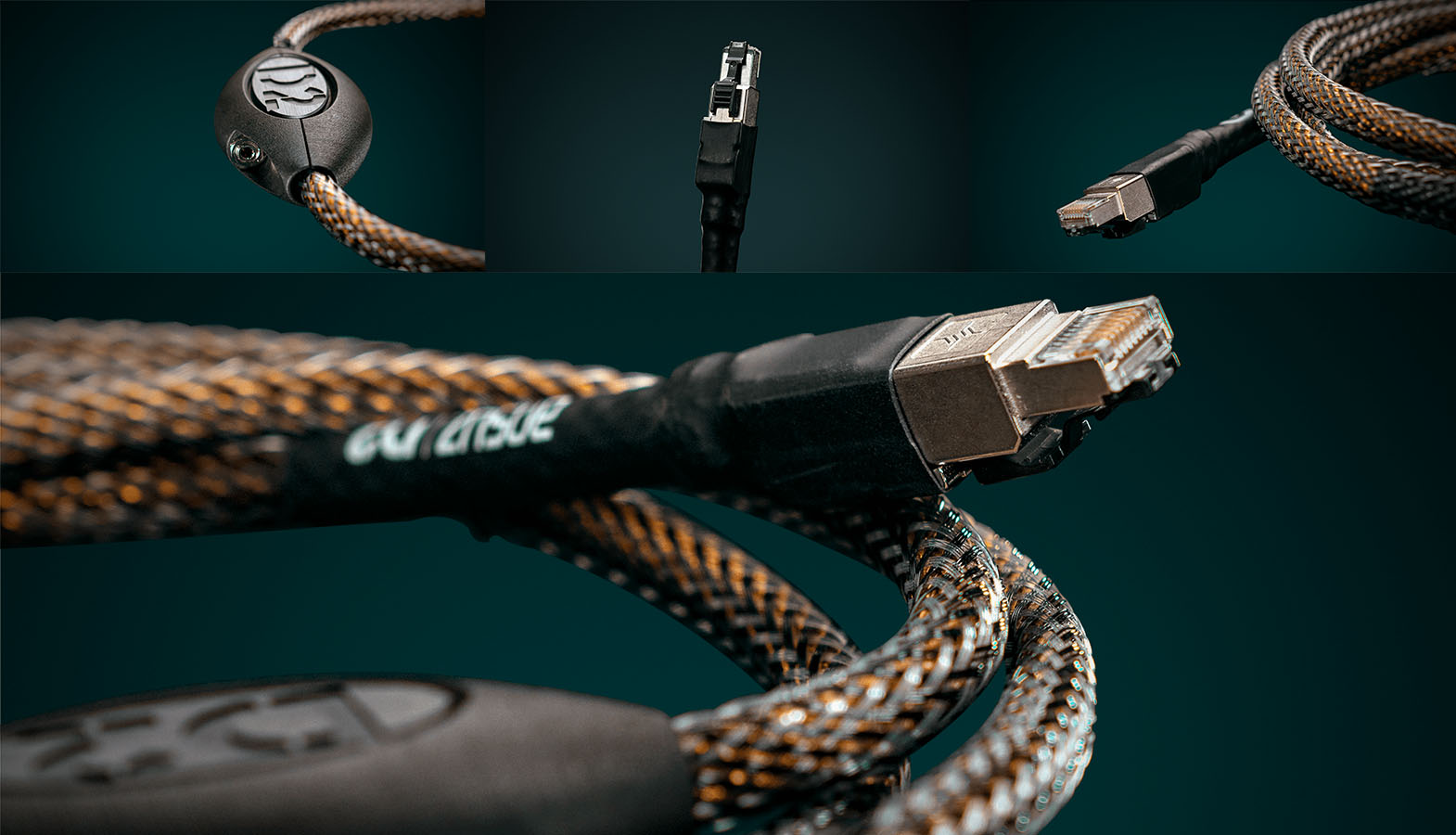
Ansuz Digitalz D2 Ethernet Cables
The Ansuz Digitalz Ethernet D2 cable is equipped with Ansuz’s two versions of the anti-aerial resonance coils. This ideal combination of audio technologies shall reveal your audio system’s full potential.
Ansuz develops and manufactures cables based on advanced, cutting-edge technologies. Ansuz cables deliver a pure signal flow that unleashes the authentic sound initially intended by the master recording. To achieve this, lowering resistance, curb induction, and reducing noise floor to a minimum is imperative. The more advanced the cable series, the more refined and sophisticated the implemented technologies, and the more transparent, holistic, and authentic the resulting soundstage.
But beyond polished marketing statements like the one above, we now have many Known Unknowns. All this proprietary state-of-the-art technology is totally new and quite a departure from the standard principles others use. This is how I discovered the first big previously Unknown Known.

The “blind spot.”
The noise-suppression technology is so powerful that comparing it with other products by just changing the switch that will feed the streamer becomes a trap, a veritable “blind spot.” We know now that one should not judge the influence of an Ansuz PowerSwitch just by re-routing the RJ45 connections. Even if the power switch outputs are not connected, the Tesla Coils will provide feedback through the mains power, which will influence any other components in the system for the better, altering the listening impressions and comparisons with different switches.
During the review process, this previously unknown phenomenon was discovered, even if it was in plain sight and had already been demonstrated by other Ansuz types of equipment. It was a genuinely known fact rendered by mistake for the unknown category. That is why I had to change the strategy, and I disconnected the Ansuz PowerSwitch D3 entirely from the power mains when I was not actively listening to it.
That completely changed the reality, and a new plan had to emerge. It was almost impossible now to test the PowerSwitch D3 in the same chain.

Review Context
The actual chain of a separate network path dedicated only to the audio feed consists of the following: a custom dedicated Roon server connected by two separated ethernet ports, one to the internet (through my router) and another one to a Melco S100/2 switch, which will separate the audio branch of the network. Both the internet connection and the audio connection of the server are galvanically decupled with fiber optic cables. From the Melco S100/2 switch, another fiber optic cable will travel to the audio room, feeding only the Lumin L2 switch and network storage. Further, Lumin L2 will provide an SFP+ direct link to the Lumin U2 streamer. Moreover, the SFP+ is a Melco Direct Attach Network high-quality cable with all the advantages of the SFP connection and none of the downsides of multiplexing conversion of standard optical SFPs.
It is a complicated setup based on meticulous testing and refinement over time. The idea is to separate the audio network path from all other network activities and interferences. And it is working fine; it just requires an attentive selection of cables, converters, and power sources.
For the complete audio system, a few speakers will be used — Raidho TD1.2 bookshelf and TD2.2 accomplished stand mount of Danes origin, together with expressive and very special German horns from Blumenhofer Acoustics — Genuin FS3 MK2. As mentioned, the Lumin U2 streamer will provide the digital signal to a Mola Mola Tambaqui DAC. Preamplification and power amplification are of English breed from Chord Electronics, Ultima Pre 2, and Ultima 5, respectively. All equipment was seated adequately on my Woodyard Suspended Triple system. As for the cables and power conditioning, please see the detailed description of my reference system that will always be present from now on at the end (together with direct links to the previously reviewed pieces that I chose to buy for my system).
I will take the last break before the full assault of the testing conclusions, just to mention the previous reviews of Raidho TD1.2, Chord Ultima 5, and Woodyard Suspended Triple. Also, in the coming weeks, all the mentioned beautiful products will get our in-depth assessment treatment: Blumenhofer Genuin FS3 MK2 and Raidho TD 2.2, plus the spectacular Mola Mola Tambaqui DAC. I hope you are as excited as we are.
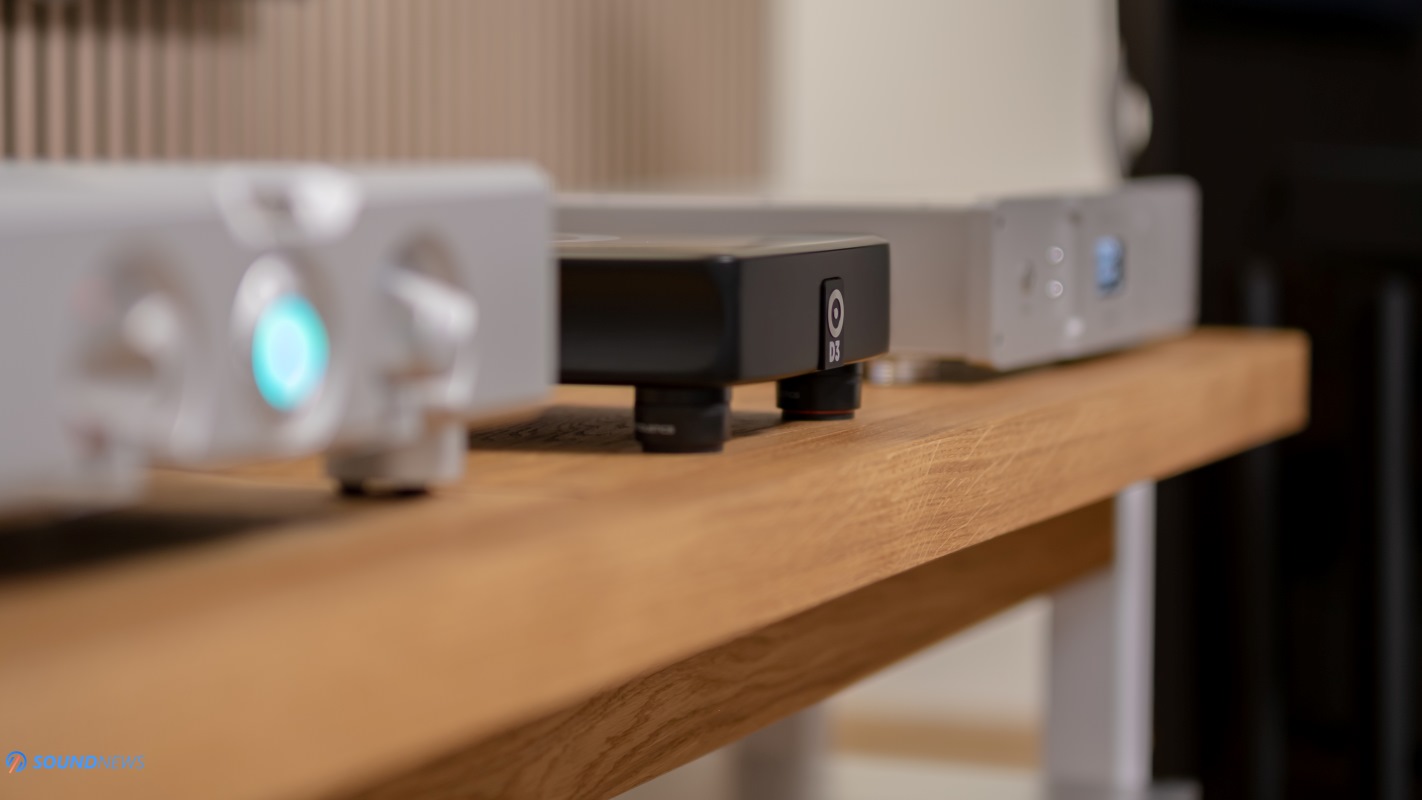
Listening impressions
Connecting the Ansuz PowerSwitch D3 directly to the wall ethernet socket (directly from the router) without much time to settle, D3 makes an immediate appearance of a bold character. I was amazed at how much of a difference I could hear. Based on my wrong assumptions, I expected a moderate performance. I was utterly wrong. PowerSwitch D3 managed to clean up the sound and show a fundamental impact without any of my previous mind-boggling tricks involved. I was left quite unbalanced by this magnitude of performance with just the switch plugged into the wall. And a little setback by what I thought so hard that I mastered by myself with all my tricks…
From the first seconds of listening, I understood all my struggles were almost pointless, with a separate network path, fiber optic decoupling, separate uber-quality power supplies, and multiple switches. It’s not entirely meaningless, I have to admit. I got the sound I liked, but all of that was demolished in a split second by this D3 switch, which came without any fuss and behaved exceptionally powerfull and detailed, just doing its job without any extra requirements or help at such a high level. It was a little disconcerting.
Then I remembered… The switch was helped by the Active Tesla Coil technology and active noise cancellation in the cables — a lot of help! As I previously mentioned, the technology deployed is so powerful that it can clean the mains only by connecting it to the power socket. That is enough to provide the best power to the switch itself. If you extend it, as Ansuz did, with active noise cancellation in the cables, you get a potent noise suppression machine on steroids. And the results were staggering.
The sound was bold, powerful, extremely clear, crisp, and totally focused. Other switches with which I will compare provide a smoother, easier-going sweetness at the expense of polishing a little bit of the transients and adding a bit of thickness and a touch of warmth. This is not the case for the PowerSwitch D3. It is swift, highly revealing, and very dynamic. It is a kind of no prisoner taken, no beautification required; God damn real and impossible to ignore presence type of sound. It is the sound I heard previously with AGD; it is their statement sound. It is the sound of Now – we are listening to music, later you can do whatever you want. It is not harsh by any means, bright, piercing… or whatever negative thoughts are going through your head right now. It flows with that powerful presence and dynamic contrast that you can not stop listening even if you want to. Your brain will be hooked into listening to the entire song, the next, and the next. It is just hard for your brain to adapt to the reality of the performance: you hear so much, so deep, so dynamic, so clear that it just makes no sense for a while.
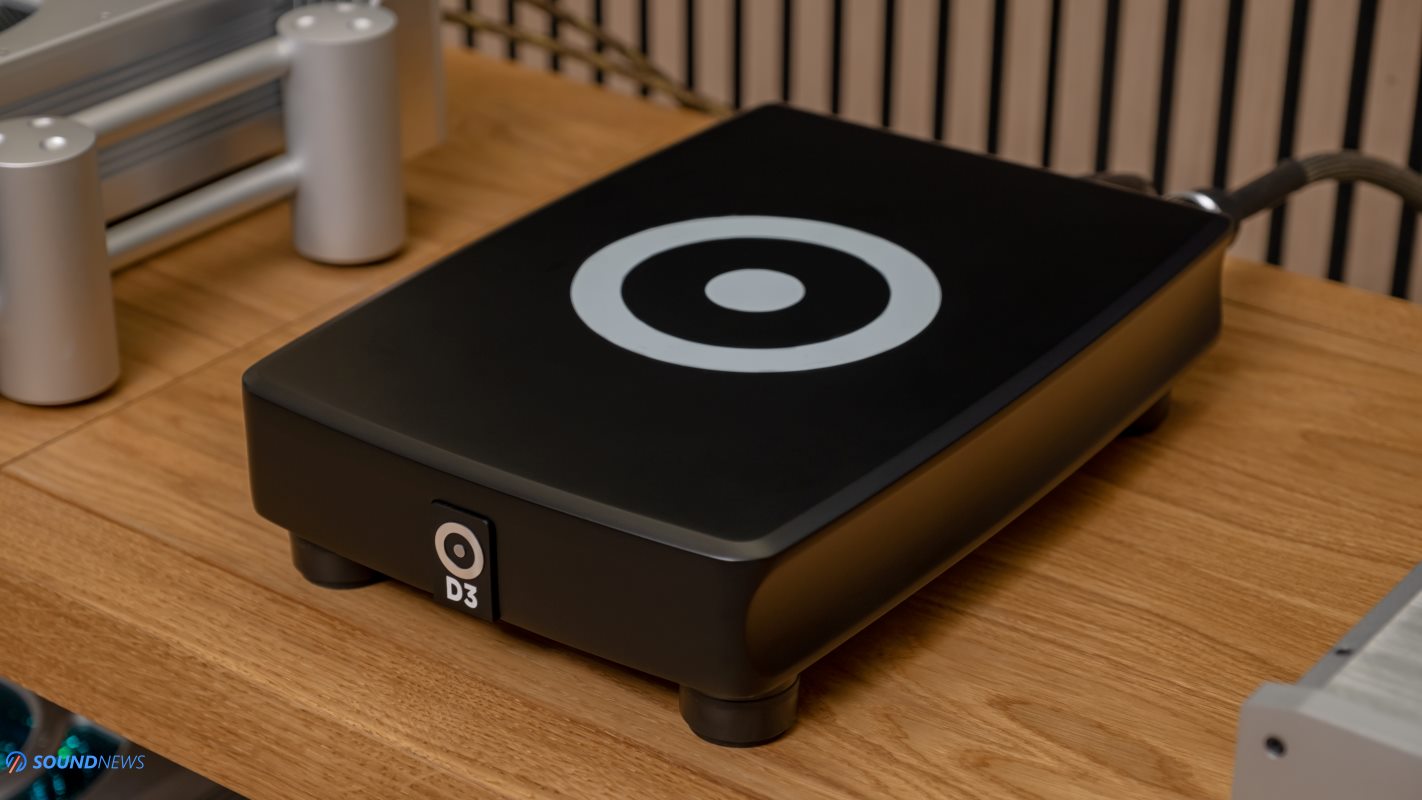
The highs are smooth, and the contrast of that no fatiguing delivery of the treble and, at the same time, the level of detail provided is addictive. You will have these contrasts everywhere: the bass is punchy but so detailed, so different from a lush-sounding bass. The mids are very transparent and have a natural and highly neutral tonality. It is surprising how relaxed the voices can sound because they are so transparent. It is always about striking contrasts: an energetic presentation and, at the same time, luxurious, non-fatiguing. The details are sky-high and still smooth. The attack is fast, incisive, and propulsive but still not piercing. There is so much energy in the representation delivered in such an attentive and natural way that it sometimes makes no sense how this is possible. All these contrasting facets will contradict you and keep you a prisoner of the music for hours and hours.
The soundstage is very precise. It is large, generously high, deep, and well-sorted, again contrasting with what we are used to hearing. We are used to accepting a huge soundstage being a bit blurry, but we enjoy it anyway, being so generous. We are used to admiring a pinpoint positioning throughout the soundstage, even if the magnitude or depth does not quite extend beyond the speaker’s boundaries. We understand, most of the time, the inherent limitations. We are not used to having it all at such a high level. When it happens, our brain gets hooked. It becomes an addiction; you need it again and again and again. It is spectacular and entertaining for your brain to solve pleasant contrasting stimuli and micro-adapt to the novelty constantly. It is not a significant change or departure from what we know, so no considerable effort or complete rewiring is required. These small micro-adjustments are exciting and pleasurable for breaking the monotony our brains try to maintain. That may be why it is so satisfying, and the best part is, it requires minimal effort for maximum enjoyment.
Returning to my stack was less dramatic than I expected, being so caught up in Ansuz PowerSwitch D3. But I missed some incisiveness and tight punch of the bass. It was a sweeter sound, not as present and addictive as D3. I could take my mind off it now; no contrasting staff would keep my brain in that “now” moment. I can drift a little. I already missed the incredible transparency and the incredible low-noise floor provided by D3 only by being plugged into the same mains. The clarity provided by D3 is unique, and the advantage of the Active Tesla Coil technology is indisputable. I will venture into a comparison with other switches I own, but please take it lightly, as it is not a definitive conclusion. It is all about the whole system in the end and the synergy between all the components. Sometimes, the novelty can trick us into sidesteps that we misinterpreted as genuine upgrades.
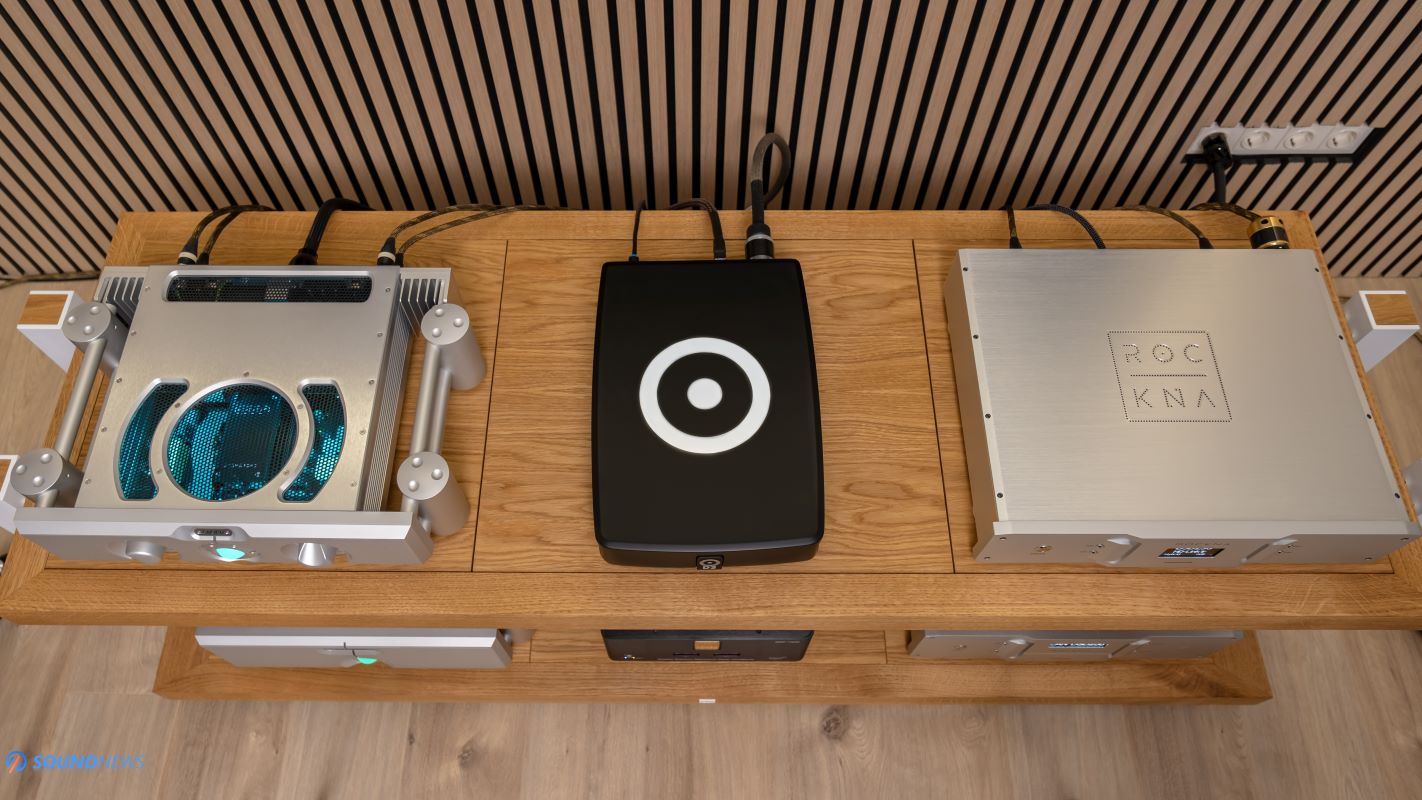
Subjective Comparisons
Ansuz PowerSwitch D3 (€5.800) vs Melco S100/2 (€2.499)
It might not be an apple-to-apple comparison, for sure. Still, both are good, expensive audiophile switches, even if there is a considerable price discrepancy – the D3 is more than twice the price of S100/2. And, yes, the Melco switch will require a linear power supply added extra to perform at its best.
And yet, as previously reviewed, Melco S100/2 is performing at a high level, so any comparison is justified. A direct face-to-face with Ansuz PowerSwitch D3 shows a totally different character. While D3 is powerful, articulate, and incisive, S100 is more relaxed and less energetic. S100/2 is sweeter, and some will say a smidge more musical, but I am not sure if this is the right word… Probably more delicate in delivering, not as precise and confident as D3. The noise floor is also not so low as with Ansuz PowerSwitch. It will require an optical network feed for best results and will still be overthrown by D3 for noise suppression. A little lack of precision will not bring the wow effect of Ansuz PowerSwitch.
On the other hand, the delicacy of the highs and the sweet midrange of S100/2 are remarkable, but the presence and articulation are rather shy compared with D3. It is a different character, and it can not keep up with the outstanding low-noise floor of D3. Even so, many will prefer the more relaxed attitude, sweetness, and smooth flow of the music. The bass is not as tight and thunderous as with D3, but one could like a fat and softer bass compared to a more impactful and detailed one. It is all about the type of music and the overall system capabilities. Many times, I appreciated the elegant and refined way of Melco S100/2.
From a purely technical perspective, in direct comparison, it is clear that PowerSwitch D3 is showing more in a highly confident way: more details, more impact, an incredible presence, faster, and a lot more energetic. Due to such performance in noise suppression, one would expect a much more clinical sound. But it is precisely the contrary. A lower noise floor will add sky-high details with incredible smoothness and powerful articulation. The powerful energy delivery will have fewer obstacles and be revealed fully. Such a low-noise floor will result in a more transparent and broader extension with more texture and details. Where one can expect unwanted energy in the upper registry will discover the opposite, a more refined and smooth higher frequency. The contrast of the delivered energy in such a precise and smooth way is remarkable.
So, from the objective, technical perspective, Ansuz PowerSwitch D3 is a superior product — and it should be, as it costs more than twice as much. From a more subjective point of view, many will need or like the sweet flow and elegance of Melco S100/2 a lot. The truth may not always lie in black and white. There are always shades of gray and a myriad of colors in between.
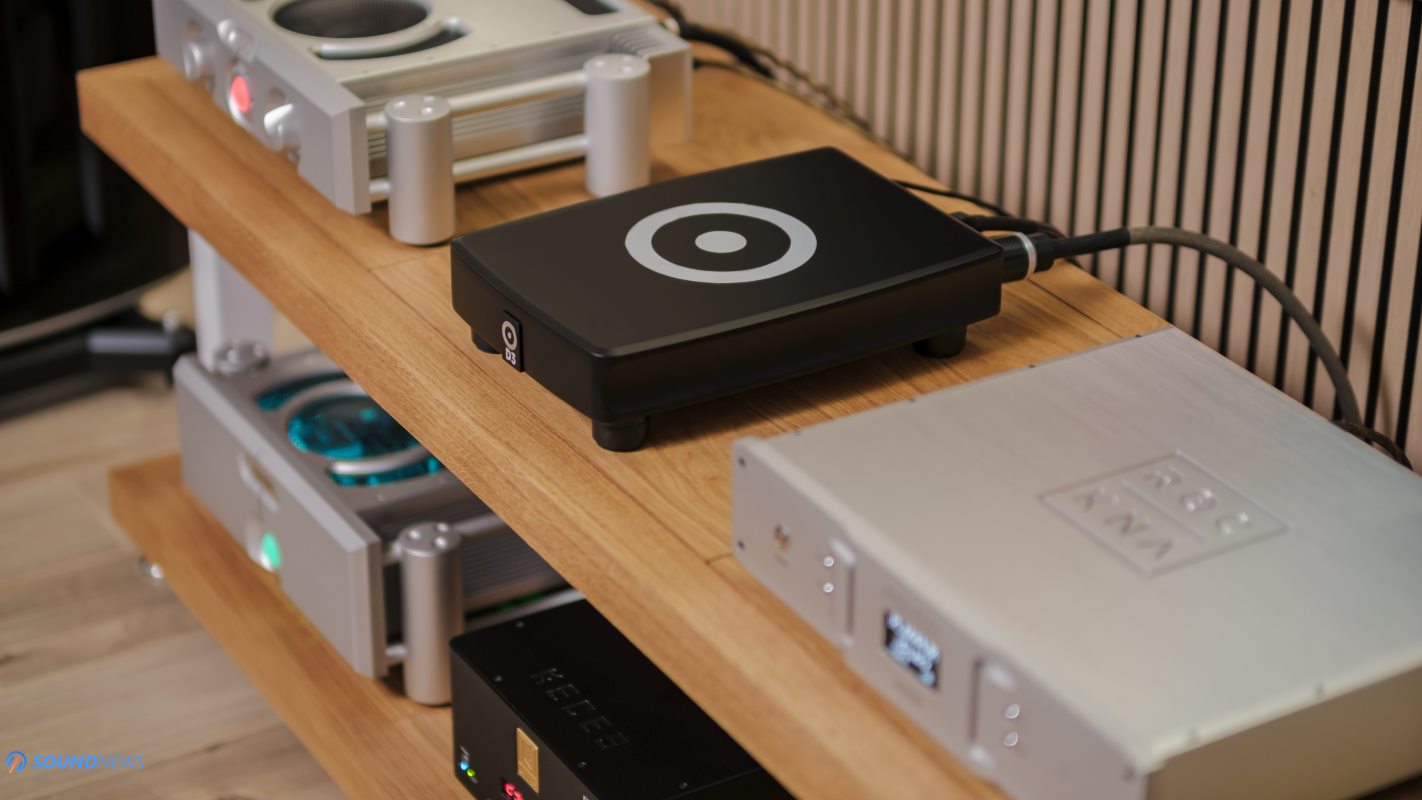
Ansuz PowerSwitch D3 (€5.800) vs Lumin L2 (€3.499) + Lumin U2 (€5.199)
Again, this may be another apple-to-oranges comparison, a purely subjective one. That is because Lumin L2 is much more than an audiophile switch; it is also a NAS (storage server). It will provide two optical SFP+ connections and a beautiful integration with the Lumin U2 streamer. Those two will walk better as a pair; a tight integration and natural synergy will augment the performance. Separating the siblings will diminish the potential; those two are better as a team.
Even so, I obviously compared my Lumin stack (Lumin L2 switch/music library and Lumin U2 streamer) with PowerSwitch D3 and Lumin U2 alone, without its partner. The active Digitalz D2 cables will replace the SFP+ connections. And yes, full disclosure: Ansuz PowerSwitch D3 was on par with Lumin L2. The quietness brought by D3 was again more impressive and more significant than the synergy between those two Lumins. The Active Tesla Coil technology enormously benefits the entire audio chain, not just the switch itself. That is why when I forgot to unplug the PowerSwitch D3 in one of my testing sessions, even if not actively used, D3 made the Lumin stack better. The noise suppression was clearly audible, and I was fooled for a time. Until I saw the “blind spot” and decided to unplug the D3 every time it did not work.
The Lumin stack is a great contender, though. These siblings are playing at a very high level. The same benefits brought by PowerSwitch D3 are really on the same level: effortless and highly detailed, smooth top end, excellent dynamics, and a large, deep, and precise sound stage. The immediacy of PowerSwitch D3 still prevails; that “now” moment of impulsive character is the foremost sidestep here. With more energy and a higher soundstage, D3 will marginally outgrow the Lumin L2. I still love the liquidity and smoothness with a slightly sweeter presentation of Lumin. Showing the same great texture, the natural micro sharpness of PowerSwitch D3 will still try to convince you of a more incredible detail performance. And that is great, but the differences are now so minute that this is just one’s subjective preference. It is a different show with almost the same athletic qualities, and it is different only because of the subtle director’s decisions.
We have to remember that we are comparing apples to oranges. The Lumin stack has a synergistic advantage, and the special umbilical SFP+ connection is of great value. Also, Lumin L2 is a great music library and plays local files better than any streaming service I tried. Lumin L2 serves local streaming with astonishingly low noise and quietness, even better than what Ansuz technology can show. That is why a direct comparison is unfair and suffers much from subjectivity. In different scenarios, one can like any of them more. Acting alone, stranded from the Audio Group Denmark ecosystem in which it was born, Ansuz PowerSwitch is very impressive, and we can imagine what this technology can achieve when applied at every level in the audio chain. I am more than imagining it; I heard it before at a dimension “larger than life.” I know that a higher-up system based entirely on AGD components can sound better than any real-life representation. That “as the artist intended” is an overdue remark. These guys can show you better than any artist intended.
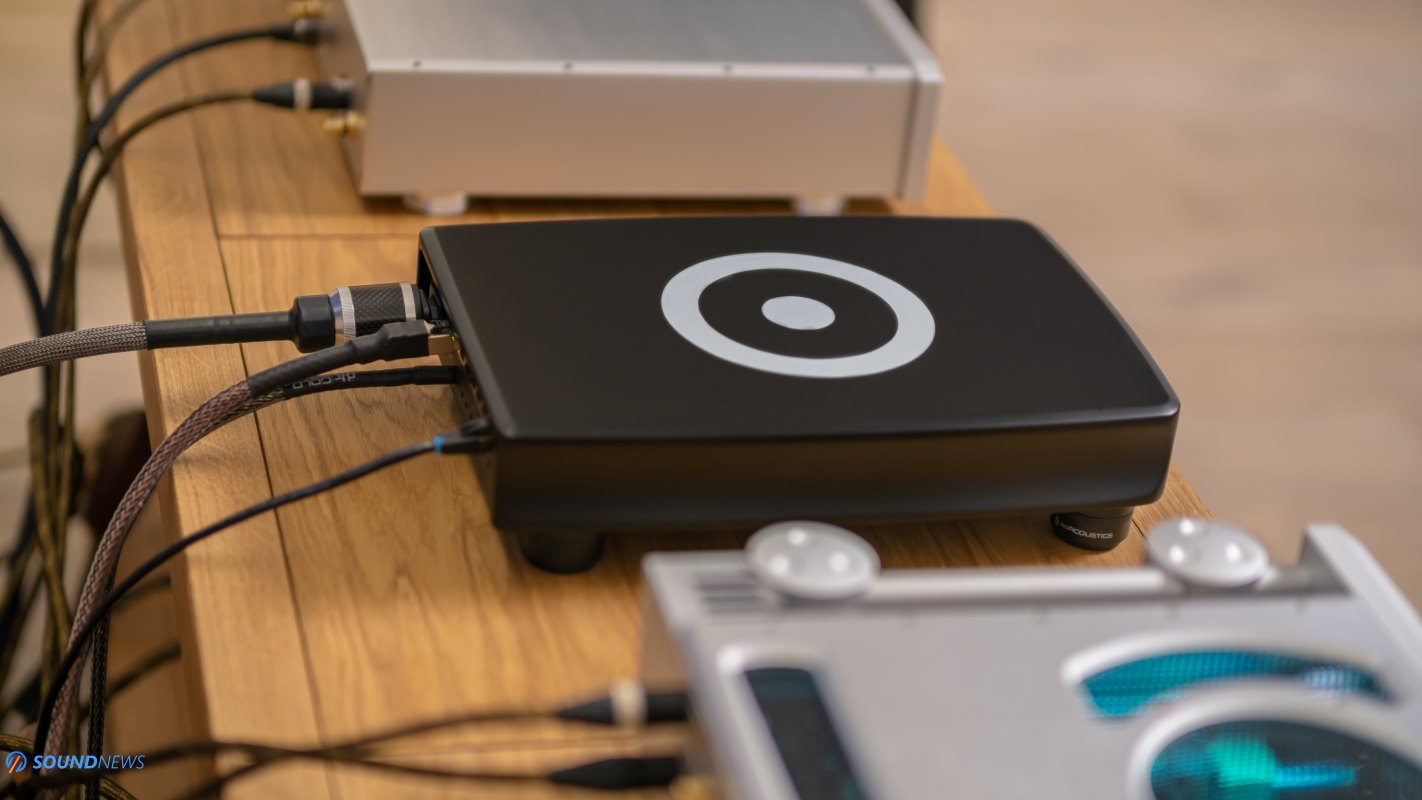
In Conclusion
Wow, we ended up here again. I can not believe how quick and rewarding this rollercoaster was. I started with preconceptions of many known unknowns, faced the terrible unknown known, and then a “blind spot” that almost changed the game.
Ansuz PowerSwitch D3 shows an incredible advantage of Audio Group Denmark’s proprietary technology. It may initially look alien to many of us, but it works incredibly well. That non-existent noise, as well as the performance and impact of the whole chain when it’s only plugged into the mains, together with the Digitalz D2 active cable powered by the included PowerBox, has to be heard to be believed.
Whenever we think of a piece of equipment that purifies the signal, we are afraid of ending up with a dry, possibly harsh, and highly analytical sound. I do not know where this analogy comes from in my mind, but it is so much further from the truth. In fact, a clean sound starting with the source itself will bring spaciousness, dynamics, fluidity, detail, and an incredibly smooth sound. The overall balance of PowerSwitch D3 will impress above any expectations with a very technically advanced sound. At its core, Ansuz PowerSwitch D3 is incisive, energetic, impactful, transparent, and precise, with a true musicality of its own.
Contrary to what these attributes suggest, the sound is becoming highly emotional, direct, and extremely present. It has an organic character that comes from all those contradicting facets, which is, in fact, the D3’s pure charm. Sometimes, it reminded me of the sweet and salty taste of salted caramel ice cream — two opposing tastes that confuse our senses in such a pleasurable way.
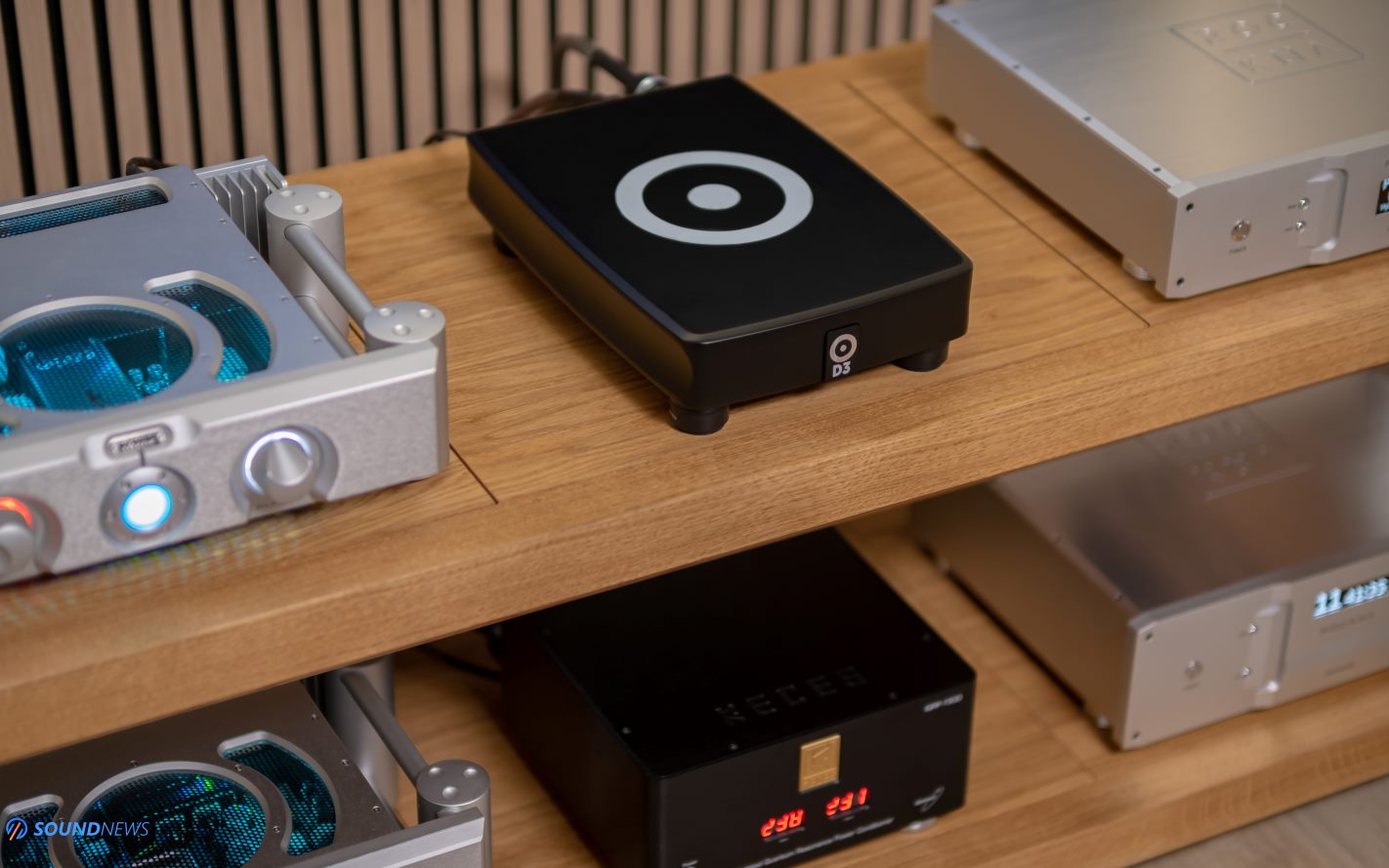
Further Improving the PowerSwitch D3.
We did not have the Darkz footers and resonance control accessories for this review. But I heard the effect before, and it was substantial. PowerSwitch D3’s feet are perfectly made for Darkz footers, and they will add articulation, precision, and transparency. Proper footers will bring a more robust bass and a more realistic timbre. The investment in the highly acclaimed Darkz footers and resonators will pay off big time in sound solidity and weight.
Price and availability
Ansuz PowerSwitch D3 – €5.800
Ansuz Digitalz D2 Ethernet cable – €2.050
You can check your local distributor on the Audio Group Denmark website.
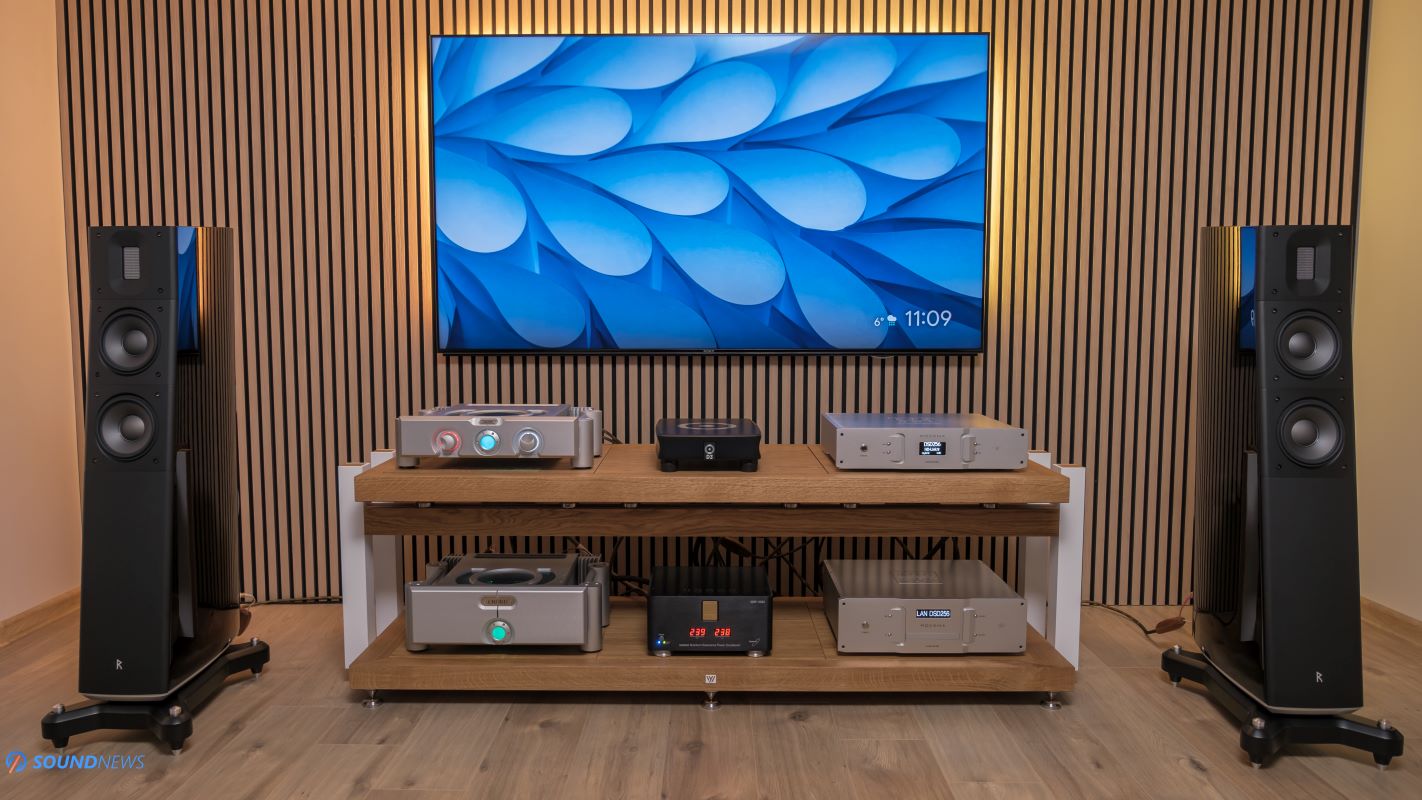
Associated Equipment
- Digital source: a custom passive server with Euphony, Roon, JCAT NET XE powered by linear power supply – FARAD Super 10
- Transport: Lumin U2 streamer, Melco N100 powered by FARAD Super 3
- D/A concerter (DAC): Mola Mola Tambaqui
- Amplifier: CHORD Electronics Ultima 5
- Preamplifier: CHORD Electronics Ultima 2
- Loudspeakers: Raidho TD 1.2, Raidho TD 2.2
- Headphones: Meze Elite
- Headphone amplifier: Trafomatic Primavera
- Speaker Cables: Marohei Statement SE
- Interconnects: Marohei Statement SE balanced, Crystal Reference2 Diamond XLR
- Power cables: Marohei Statement SE, Crystal Ultra2 Diamond Power, Roboli Charlin
- Power: Keces IQRP-1500
- Network: Melco S100/2 switch powered by FARAD Super 3, Lumin L2 switch/music library
- Racks: Woodyard Suspended Triple, Woodyard Baby Modular
- Anti-vibration accessories: Viablue UFO DOME Cable holders, Viablue UFO Vibration Absorbers
Thank you
If you reach this point, thank you, dear reader, for your open-minded perspective and interest in exploring such depths of the audiophilia phenomenon with us. If you have something to add, you are always welcome to do so; just hit the comment section below. Let’s remember there is always something we really do not know, and the feature may hold incredible discoveries. Let’s hear only better and better.

